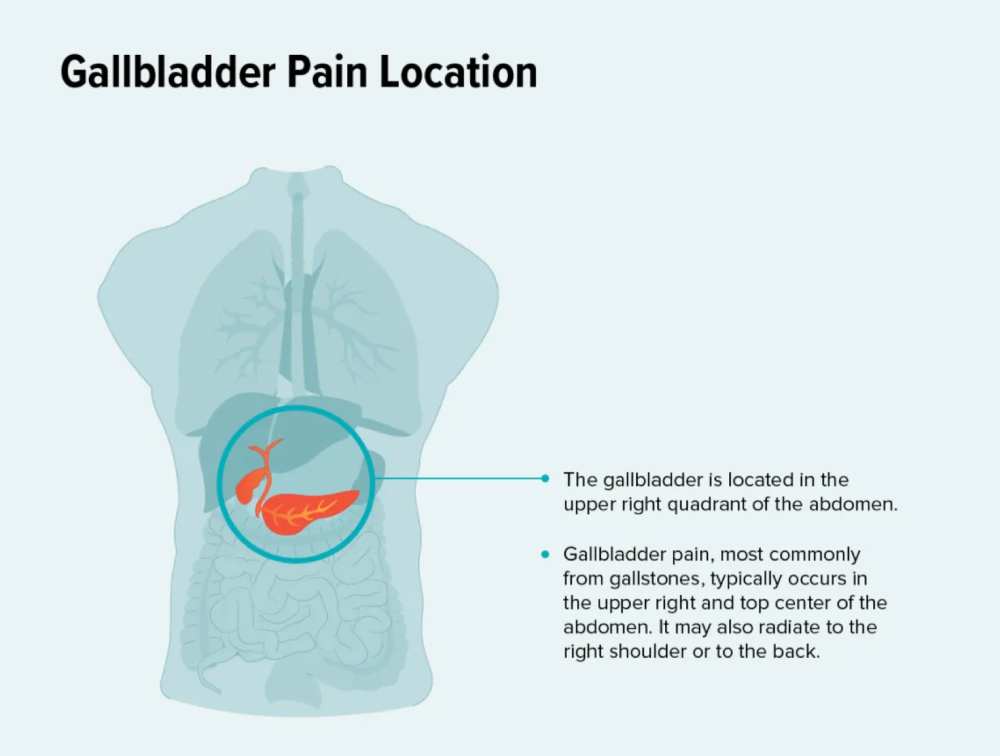Symptoms such as these should be discussed with your doctor.
Table of Contents
What is a gallbladder attack?
According to a gastroenterologist at NewYork-Presbyterian/Weill Cornell Medicine, a gallbladder attack occurs when bile is blocked by a gallstone. A gallbladder blockage occurs when the gallbladder contracts or squeezes, often in response to a fat-heavy meal.
A gastroenterologist and adjunct professor at Touro College of Osteopathic Medicine in New York City, explains that gallbladder pain disappears as the gallbladder relaxes. What you need to know about gallbladder attacks is these warning signs.

Pain in the abdomen
One of the most common gallbladder attack symptoms is stomach pain, which usually occurs in the upper right side of the abdomen. According to source, this pain can sometimes radiate to the back and right shoulder.
“It is usually sharp and lasts anywhere from a half hour to an hour after eating,” he says. The following are 7 silent signs of gallbladder cancer you shouldn’t ignore.
This pain comes and goes
Because gallstones pop into and out of the gallbladder, it’s common for pain from gallstones to come and go. Some people confuse gallbladder attacks with pancreatitis, but pancreatitis is more constant, aching, and present for hours and hours—a gallbladder attack is not.
You feel this pain after eating high-fat meals
You might have a problem with your gallbladder if you feel unwell after eating something greasy and fatty, according to research. People often talk about eating hamburgers or omelets or something greasy because fat entering the intestine actually releases a hormone that squeezes the gallbladder. Gallstones cause the pain caused by the squeeze.
You have nausea, vomiting, or heartburn-like symptoms
There are also many other health issues associated with these two gallbladder attack symptoms. People who experience gallbladder attack symptoms may mistake them for heartburn or acid reflux.
The symptoms of nausea and vomiting may not be the best indicators of a gallbladder attack on their own, but they should be considered in conjunction with others from this list, especially if they occur repeatedly. “Patients may experience nausea and vomiting, especially after eating extremely fattening meals”. Cancer was the cause of this woman’s “heartburn.”
Your urine is dark and your stools are lighter than usual
A good look at one’s poop can help indicate a gallbladder attack, but nobody wants to do it. Stools that float and don’t flush should be avoided, says a source. You might have an obstruction of the bile flowing out because bile aids in fat digestion.
It is also why your poop might be lighter and your pee might be darker if you have a blocked bile duct or pancreatic duct. This blockage causes the stools to become fatty and float.
Your skin or eyes are yellowing
In Dr. Mahadev’s opinion, jaundice is caused by stones that fall out of the gallbladder and stick in the bile or pancreatic ducts. Healthline reports that jaundice can also occur in people with other disorders such as anemia or liver disease. Symptoms of jaundice can also include unexplained itchiness that is not accompanied by a rash.
Talk to your doctor about these symptoms and other risk factors
If you experience these gallbladder attack symptoms, speak with your doctor. Gallstones do not always cause gallbladder attacks or other symptoms, according to a source. Talk to your doctor about your risk factors, such as being female, obese, or having undergone bariatric surgery.
